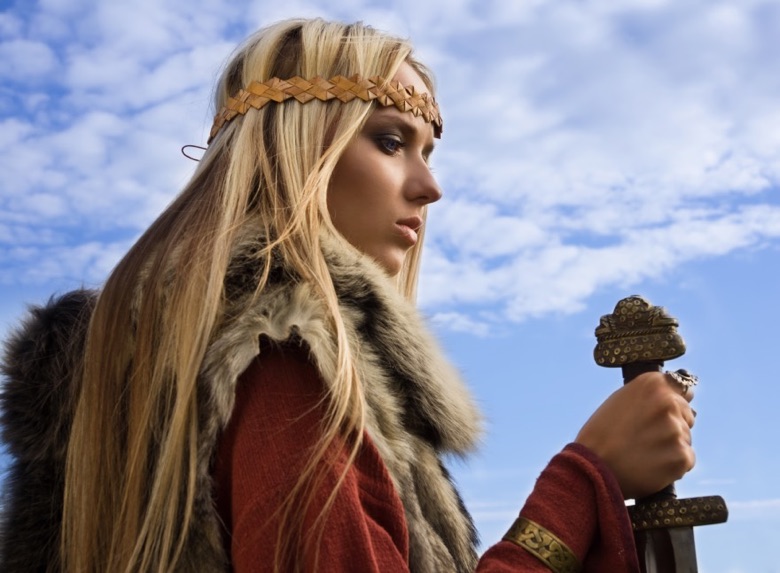
Lagertha is famous as the woman that saved the great Ragnar Lothbrok, twice. Let’s celebrate ten of these women with very short notes on how they made a name for themselves in history. This historiographic tendency makes the Viking women who did manage to make a name for themselves in the history books even more impressive. But the fates are none of the female goddesses are recorded. Even the stories of the goddesses are lost.įor example, surviving versions of the Ragnarok prophecy record the fates of most of the male deities and giants, down to Hel’s guard dog Garm. In patriarchal societies with histories written by men about men, we often lose sight of the roles of women, grand and humble. “Depicting kind of martial ethos in a trading site is also important: it’s tying two important parts of the Viking world together.It is a sad truth that until recent generations, most women have been obscured from history. " tied the Viking world together-it’s about trade, about exchange, about people moving around not just to kill each other,” he adds. Burial practices at Birka run the gamut, from burning the corpses to seating them in chairs. Perhaps as a result of the flow of goods and peoples, Birka’s gravesites bear a distinctly international flair, says Zori. Home to one of the largest, best-known Viking burial grounds, the site was also a thriving trading hub, flush with Byzantine and Arab silver from the sale of furs and slaves sent down the Dnieper and Volga rivers. Zori, for one, remains fascinated by what the discovery says about Birka, the Viking-age trading settlement where the woman was buried. “This suggests that she was the one planning the tactics and that she was a leader.” Viking Life

“On her lap she had gaming pieces,” said Hedenstierna-Jonson in a previous interview. Hedenstierna-Jonson and her colleagues say that the woman was likely a warrior-and a respected tactician, at that. The remains represented one person-and that person was a woman. The results were clear: The team didn’t detect any Y chromosomes in the bones, and the mitochondrial DNA from the various bones all matched. Fragments of the warrior’s nuclear DNA would reveal biological sex. The person’s mitochondrial DNA, passed down from mother to child, would determine whether the bones represented one or multiple people. In response, a team led by Uppsala University archaeologist Charlotte Hedenstierna-Jonson doubled back to the bones and extracted two types of DNA. Since excavation of the gravesite had occurred more than a century ago, perhaps the bones had been mislabeled, a problem with other nearby graves? Maybe the skeleton had been jumbled up with other people’s bones? Kjellström’s analysis, presented at a conference in 2014 and published in 2016, didn’t make much of a public splash, and some archaeologists pushed back. Their dimensions appeared to match those typical of a woman. Since the remains were found alongside swords, arrowheads, a spear, and two sacrificed horses, archaeologists had considered it a warrior’s grave-and, thus, a man’s.Īs National Geographic magazine reported in its March 2017 cover story on Vikings, that all changed when Stockholm University bioarchaeologist Anna Kjellström closely examined the warrior’s pelvic bones and mandible for the first time.


Since the late 1880s, archaeologists had viewed the “Birka warrior” through this lens textbooks had listed the grave as belonging to a man, but not because the bones themselves said so. And Zori notes that numerous Viking sagas, such as the 13th-century Saga of the Volsungs, tell of “shield-maidens” fighting alongside male warriors.īut some archaeologists had considered these female warriors to be merely mythological embellishments-a belief colored by modern expectations of gender roles.

One early tenth-century Irish text tells of Inghen Ruaidh (“Red Girl”), a female warrior who led a Viking fleet to Ireland. Viking lore had long hinted that not all warriors were men. “ goes to the heart of archaeological interpretation: that we’ve always mapped on our idea of what gender roles were.” “It was held up before as kind of the ‘ideal’ Viking male warrior grave,” says Baylor University archaeologist Davide Zori, who wasn’t involved with the research.
#FAMOUS NORDIC WARRIORS HOW TO#
Watch a young viking learn how to identify the proper tree to build a ship, nail the craft together, and set off on a journey around Europe. Swift and deadly, the Vikings dominated the seas of northern Europe from the late eighth century to the 11th.


 0 kommentar(er)
0 kommentar(er)
